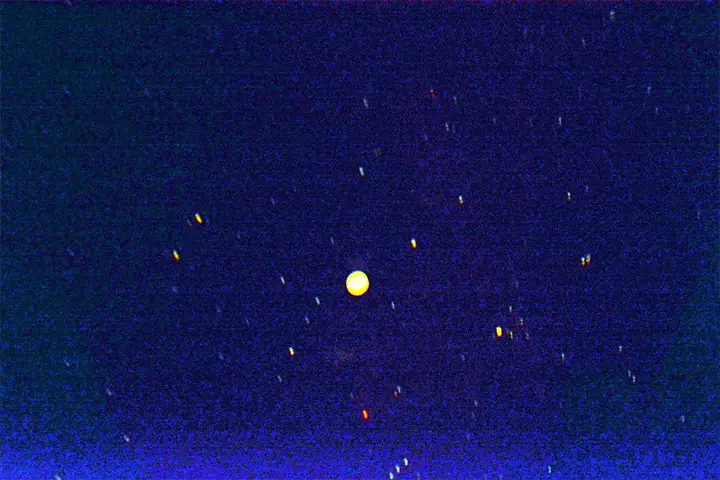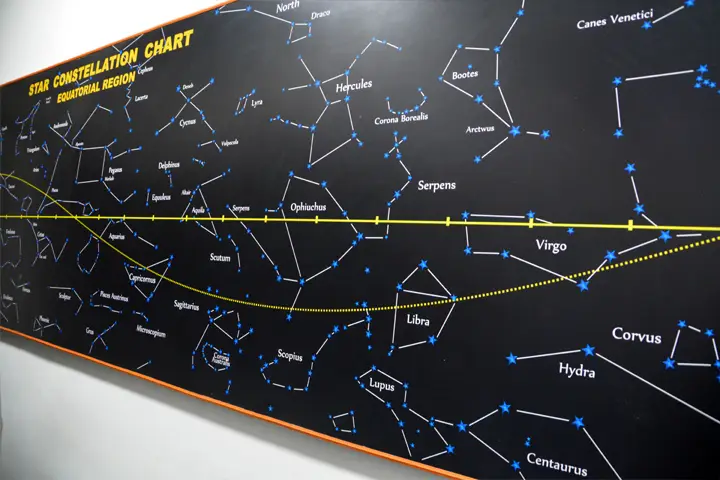Regional Science Center Dehradun
Taramandal
An interactive inflatable planetarium with a capacity to house 20-25 visitors at a time, provides an opportunity to observe the night sky siting inside the dome even during the day through an absorbing planetarium. One can learn about sky observation, identification of prominent constellations, direction finding etc, at this facility. It is a live and interactive demonstration with simulation of night sky with stars and constellation.
Exhibits at Taramandal
Planets
Planets In Our Solar System
Planets
The inner four planets closest to the sun — Mercury, Venus, Earth and Mars — are often called the “terrestrial planets” because their surfaces are rocky. Pluto also has a rocky, albeit frozen, surface but has never been grouped with the four terrestrials.
The four large outer worlds — Jupiter, Saturn, Uranus and Neptune — are sometimes called the Jovian or “Jupiter-like” planets because of their enormous size relative to the terrestrial planets. They’re also mostly made of gases like hydrogen, helium and ammonia rather than of rocky surfaces, although astronomers believe some or all of them may have solid cores.
Star Constellations
Star Constellation Chart
Star Constellations
A constellation is a group of stars that make a fanciful shape in the night sky. They are normally named after mythical characters, individuals, creatures, and items. In various pieces of the world, individuals have made up various shapes out of a similar constellation of brilliant stars. It resembles a round of coming to an obvious conclusion. In the past making nonexistent pictures out of stars got helpful for exploring around evening time and for monitoring the seasons. Since every one of the stars is at various separations, the groups of stars would appear to be absolutely unique to occupants of another planet circling another star.
Star Constellations
List Of Star Constellations
List Of Star Constellations
- Andromeda
- Antlia
- Apus
- Aquarius
- Aquila
- Ara
- Aries
- Auriga
- Boötes
- Caelum
- Camelopardalis
- Cancer
- Canes Venatici
- Canis Major
- Canis Minor
- Capricornus
- Carina
- Cassiopeia
- Centaurus
- Cepheus
- Cetus
- Chamaeleon
- Circinus
- Columba
- Coma Berenices
- Corona Austrina
- Corona Borealis
- Corvus
- Crater
- Crux
- Cygnus
- Delphinus
- Dorado
- Draco
- Equuleus
- Eridanus
- Fornax
- Gemini
- Grus
- Hercules
- Horologium
- Hydra
- Hydrus
- Indus
- Lacerta
- Leo
- Leo Minor
- Lepus
- Libra
- Lupus
- Lynx
- Lyra
- Mensa
- Microscopium
- Monoceros
- Musca
- Norma
- Octans
- Ophiuchus
- Orion
- Pavo
- Pegasus
- Perseus
- Phoenix
- Pictor
- Pisces
- Piscis Austrinus
- Puppis
- Pyxis
- Reticulum
- Sagitta
- Sagittarius
- Scorpius
- Sculptor
- Scutum
- Serpens
- Sextans
- Taurus
- Telescopium
- Triangulum
- Triangulum Australe
- Tucana
- Ursa Major
- Ursa Minor
- Vela
- Virgo
- Volans
- Vulpecula













